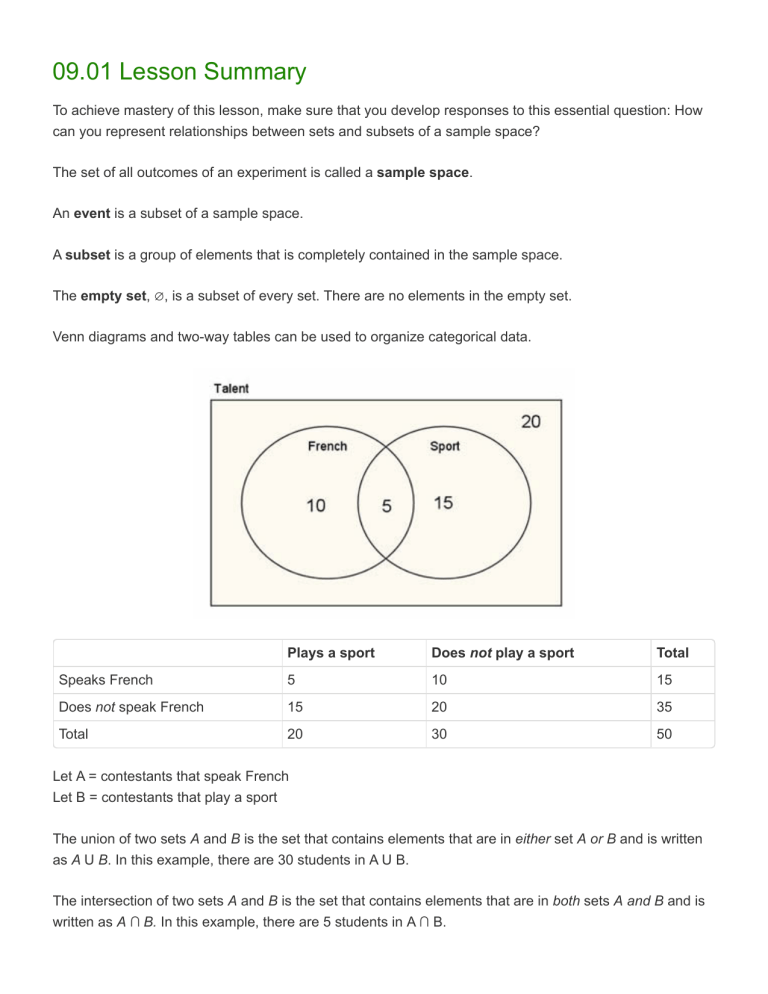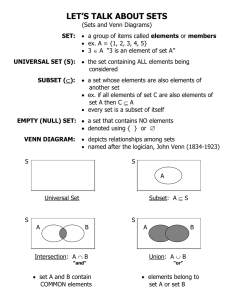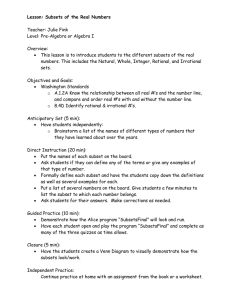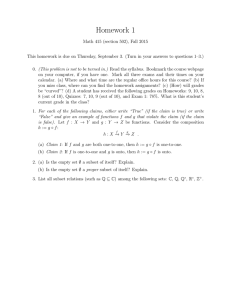
09.01 Lesson Summary To achieve mastery of this lesson, make sure that you develop responses to this essential question: How can you represent relationships between sets and subsets of a sample space? The set of all outcomes of an experiment is called a sample space. An event is a subset of a sample space. A subset is a group of elements that is completely contained in the sample space. The empty set, ∅, is a subset of every set. There are no elements in the empty set. Venn diagrams and two-way tables can be used to organize categorical data. Plays a sport Does not play a sport Total Speaks French 5 10 15 Does not speak French 15 20 35 Total 20 30 50 Let A = contestants that speak French Let B = contestants that play a sport The union of two sets A and B is the set that contains elements that are in either set A or B and is written as A U B. In this example, there are 30 students in A U B. The intersection of two sets A and B is the set that contains elements that are in both sets A and B and is written as A ∩ B. In this example, there are 5 students in A ∩ B. The complement of set A, or A’, is the set of all elements that are in the sample space but not in set A. In this example, there are 40 students in A’. Set A is contained in set B if all of the elements in set A are also in set B. This is written as A ⊆ B. But notice this cannot be done in the Talent example since there are students in set A not included in set B. Print




